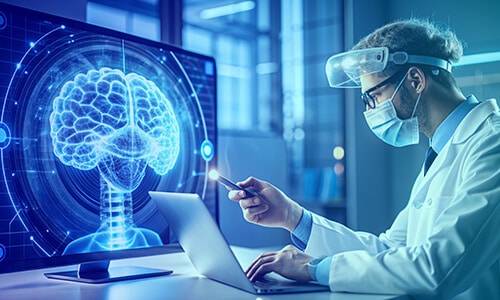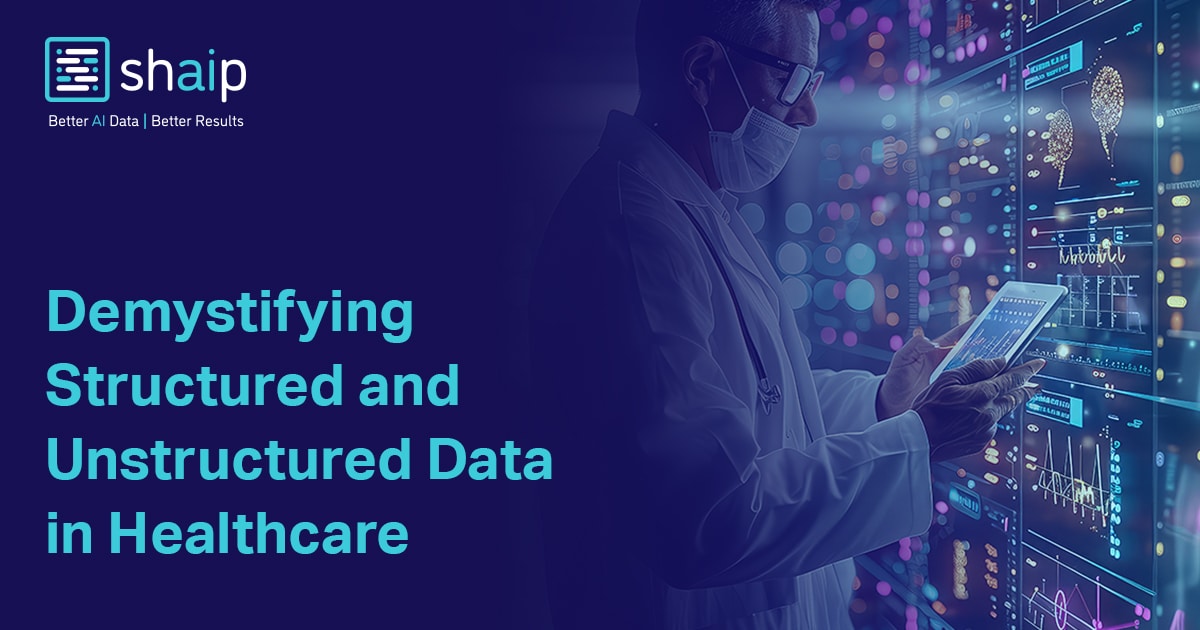The subconscious visuals of healthcare data scientists and analysts at work involve neatly organized spreadsheets, algorithms, programming languages processing data, and visualization tools that churn out colorful graphs and charts. and similar. However, this is far from reality.
In reality, data scientists grapple with one element on a daily basis – unstructured data. The big data boom has immensely influenced the healthcare industry. Reports reveal that technical advancements in terms of clinical equipment, wearable devices, Electronic Health Records (EHR), and more have resulted in enormous volumes of data generation.
In fact, statistics reveal that the healthcare industry accounts for almost 30% of the entire volume of data generated. Besides, on average, a single hospital produces over 50 petabytes of data every single year. However, the catch is that over 80% of the data generated is unstructured.
What is it and how does it impact data-driven decision-making, breakthrough revolutions, and healthcare R&D and innovation? We’ll find out in this article.
Structured and Unstructured Data: Two Halves Of The Same Capsule

Every data generated falls under one of the two categories. Now, let’s comprehend what the two mean.
Structured Data In Healthcare
Any data that is straightforward and which is neatly organized, easily accessible, and in a standardized format constitutes structured data. The key characteristics of structured data include:
- Universal or uniform formats with proper attributions to name, date, medical codes, and more
- Interoperability, where their standardization paves the way for healthcare stakeholders across the spectrum to use this data for their requirements
- Findability and processability to foster clinical decision-making, referencing, reporting and more
Examples Of Structured Data
| Clinical & Medical Codes | ICD and CPT codes, reports from lab results |
| Demographic Information | Patient name, age, date of birth, gender, region and more |
| Physical measures & vitals | Height, weight, heart rate, body temperature, and similar |
| Medications | Prescribed drugs, dosages, schedules of administration, allergies and more |
Unstructured Data In Healthcare
Any type of data that is not available in a standardized format, is in an accessible location or is unprocessable falls under the category of unstructured data. Unfortunately, in healthcare, the volume of unstructured data generated surpasses its counterpart.
If structured data reveals symptoms, unstructured data brings to light the underlying reasoning and other nuances. To best understand unstructured data, we need to have a look at the real-world examples.
Unstructured Data Examples
| Medical Notes | Offline medical notes such as prescriptions recorded by healthcare experts. |
| Medical Imaging Data | Any image generated by clinical devices such as MRI, CT or ultrasound scanners |
| Audiovisual data | Audio, video, or transcript data part of patient consultations, interviews, or surgical procedures |
| Patient-generated data | Available from wearable datasets, orally communicated information, and similar |
| Social media & communications data | Such as patient feedback analysis uploaded by patients for consultation or by healthcare experts, emails exchanged, messages sent and received, and similar |
| Genetic data | Insights on an individual’s DNA reports and analyses that could detect hereditary diseases |
From Actions To Insights: How To Transform And Leverage Unstructured Data To Aid Clinical Decision-making
The very technology that acts as the source of myriad types of unstructured data also provides us with solutions and techniques to decipher it. By utilizing emerging technologies such as Artificial Intelligence (AI), Machine Learning (ML), and analytics, we can not only organize this data type but make sense of it for actionable insights as well.
Let’s look at the ways this is possible.
Harnessing Natural Language Processing (NLP) In Healthcare

In simple terms, NLP can not only read and understand a doctor’s handwriting but process it to uncover aspects that go unnoticed as well. Besides, it can also parse hours of video or audio content and organize data as required and specified for laypeople to work on.
Predictive Analytics In Medicine

- Understand data for indicative results
- Understand data with indicative results and recommend solutions
- Understand and recommend solutions and predict in future of possible occurrences and outcomes
These three constitute descriptive, prescriptive, and predictive analytics respectively.
In healthcare, predictive analytics can be life-changing as it can point to a future outcome that is highly likely. The use of machine learning in healthcare has allowed for such concepts to become a ground reality. With predictive analytics, data from medical imaging can accurately predict if a benign tumor could turn into a malignant one after considering lifestyle, age, demographics, and more.
Similarly, through accurate analysis of genomic data, predictive analytics can assist in indicating if an individual is likely to develop diabetes, heart disease, or Alzheimer’s. This is the analysis between life and death as healthcare experts can recommend medication, raise awareness, or suggest lifestyle changes to prevent chances.
Innumerable avenues in diagnosing and treating ailments open up when we compile and organize unstructured data and set them with a context. With the right use of ideal technology, processing them is seamless as well.
However, if you’re looking to skip these steps and have ready-for-processing data to train your healthcare algorithms and solutions, you can reach out to us. We offer bespoke and ethically sourced healthcare data for all your healthcare-specific needs. Get in touch with us today.












